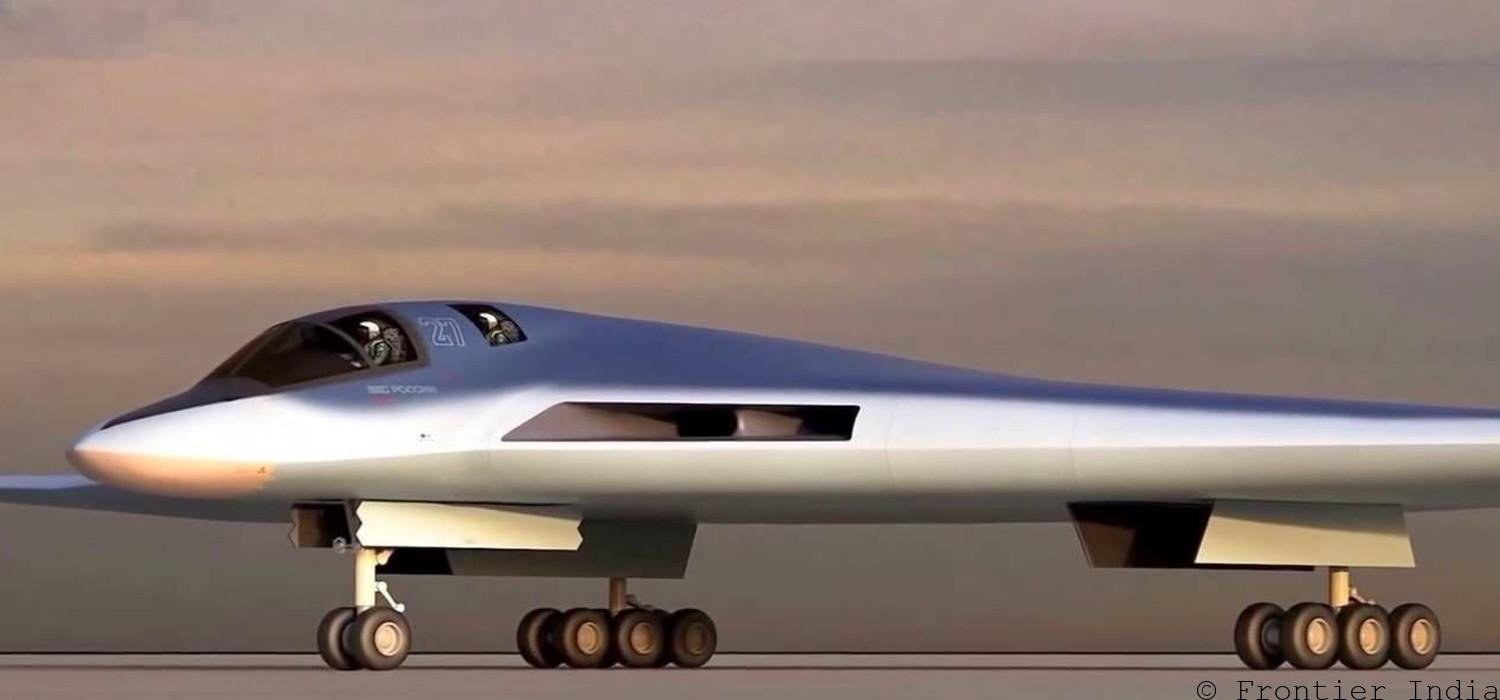Russia has been working on its next-gen stealth bomber codenamed ‘PAK-DA’ despite being occupied with a bloody war with Ukraine. The stealth bomber, which is currently in its development stage, will replace Moscow’s aging fleet of bombers that have also been deployed in the ongoing conflict.
It has now been reported that Russia is already bench-testing several prototypes of the Izdeliye (Product) RF engine that it is developing to power the PAK-DA strategic bomber. The results of the tests showed that the engine conformed to the design parameters.
An earlier report from the Russian news agency TASS cited an industry source saying that a demonstration model of the long-range bomber aircraft PAK-DA is anticipated to be built by 2023.
Moreover, the Russian authorities expect the first flight by 2035. There have been speculations that the aircraft will take a flying wing design, but no confirmed official models or artworks have been unveiled.
It is noteworthy that the Russian stealth bomber, which will be used to carry heavy payload and state-of-the-art weaponry, is being developed as a subsonic bomber (less than the speed of sound) in the supersonic era.
Countries like the US and China are working on hypersonic flights already.
EurAsian Times reached out to experts to understand the technical reasoning that influenced Russia’s decision.
Air Marshal Anil Chopra (retired), who is also the Director-General of the Centre for Air Power Studies (CAPS), said, “The United States B-2 Spirit stealth bomber is subsonic and most likely, so is the upcoming B-21 Raider, which will be unveiled in December.
These bombers are designed to operate at subsonic speeds as they need a very long range and must carry a very heavy payload. The Russian PAK-DA will also have hypersonic missiles, so it does need to fly at very high speed.”
It is pertinent to note that while the US will field its second stealth bomber after the B-2 Spirit, PAK-DA will be the first ever stealth bomber rolled out by Russia and the second-ever stealth aircraft as a whole.
Only the US, China, and Russia have successfully developed and deployed stealth aircraft. However, the Western consensus is that Russian stealth technology lags behind its Chinese and American competitors.

The fact that the Russian PAK-DA will be a stealth bomber meant for long-range operations also has much to do with Tupolev going with a subsonic platform.
According to Indian Air Force veteran and military analyst Vijainder K. Thakur, “Using hypersonic flight fighters, Russia could penetrate adversary air space safely with missiles.
Bombers have no requirement for hypersonic or even supersonic flight because they can carry hypersonic missiles. They do not need to penetrate adversary air space. Bombers need to be able to stay in the air for long durations so that they can launch hypersonic missiles as soon as a threat emerges. Subsonic flight increases the endurance of an aircraft. Therefore subsonic bombers that cannot be detected by adversary radar because of stealth are preferred now.”
When asked how subsonic flight would help reduce detection by radars, Thakur further explained that “Subsonic flight is more stealthy than supersonic or hypersonic flight because there is no skin heating. The hypersonic flight will cause heating of the fuselage surface, and the threat will be more easily detectable by thermal imaging satellites or ground sensors.”
Russia’s PAK-DA Stealth Bomber
The flying-wing PAK-DA can fly at subsonic speeds for 30 hours and has an engine with a thrust of roughly 23 tons. According to a Popular Mechanics article from August, Russia has fewer tanker planes for mid-air refueling; hence the PAK-DA would have a greater range than the B-2 Spirit.
Based on remarks made by the Russian defense industry and ministry officials, the next-generation aircraft will contain new technology and “materials” to “lower its radar signature.” In the PAK-DA bomber, a flying wing design does not have a tail surface for stability and maneuverability, and the fuselage and wings are fused.

The layout reduces radar signature. The flight computer uses electrically actuated wing-mounted aerodynamic surfaces, like flaps, to achieve stability and maneuverability. The low observable (LO) flying wing bomber can operate in tandem with drones and carry a hypersonic missile in its internal bomb bay. Russia currently has three distinct hypersonic missiles- Avangard, Zircon, and Kinzhal.
In contrast with Russia’s lagging low-observable bomber program, the US B-21 Raider stealth bomber will finally be revealed to the public later this year as announced by the manufacturer Northrop Grumman in a pompous public ceremony.
Besides the US, Russia’s partner China is also working on a next-gen stealth bomber codenamed the ‘H-20’. All three next-gen bombers are most certainly going to be flying-wing designs.
Russia’s deputy defense minister Alexey Krivoruchko stated in a 2019 interview that the PAK-DA design project had been approved and that the Tupolev design bureau had begun producing functional design documentation. It has not been made available to the public as the program is highly classified.
- Contact the author at sakshi.tiwari9555 (at) gmail.com
- Follow EurAsian Times on Google News




